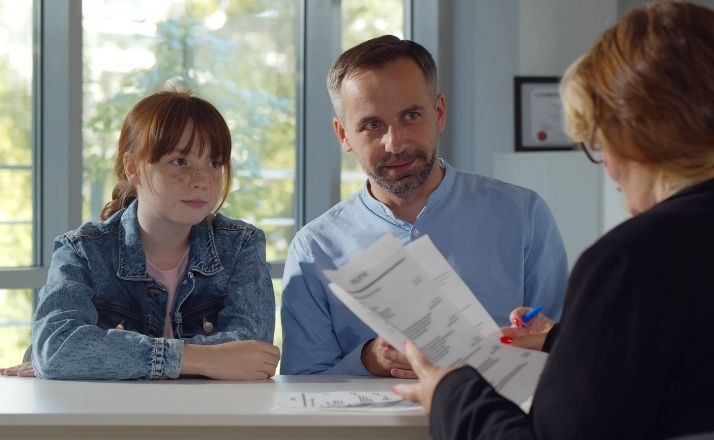If your child is struggling to learn, you may be at your wits’ end. Learning challenges can stem from a variety of causes, but eventually, many parents find themselves navigating the realm of special education and quickly learning the meaning of an IEP.
The process can benefit your child, but it can be overwhelming if you don’t know what to expect. As an educator with experience in this area, I’ll walk you through the basics of an IEP.
What does IEP mean? What is an IEP?
An IEP is an Individualized Education Program. For students found eligible for special education and related services, the Individuals with Disabilities Education Act (IDEA) legally requires an IEP.
A team meets to draft the IEP. This meeting must occur within 30 days of the eligibility team finding a child eligible for special education. The IEP team includes the student, parent(s), general education teacher, special education teacher, and any other team members or child specialists necessary.
The team meets to discuss the child’s learning strengths, weaknesses, and educational goals. They then create an individualized plan to help the child meet those agreed-upon goals.
As an example, for a young child with autism a potential goal might read, “STUDENT will participate in cooperative play with a peer at least two times per week, with 80% success, as measured by the teacher.”
After finalizing the plan, the parents and all of the child’s teachers will receive a copy. IDEA legally requires the school to implement the IEP and monitor student progress toward the IEP’s goals.
Does every student need an IEP?
No. In the United States, federal law entitles every student to a fair and appropriate public education (FAPE). For typically developing students, most of them will access such an education through the general education systems already in place.
However, for students found eligible for special education services, the IEP is an important (and legally required) part of the process.
Alternatives to IEPs
An IEP isn’t the only specialized educational plan. A 504 plan is the most common alternative. According to the Virginia Legal Aid Society, a 504 plan “allows children with special needs who don’t want or qualify for special education services to better access learning experiences at school.”
In order to have an IEP, the school’s eligibility team must find a student eligible for special education services. This can be a complicated, somewhat nuanced process.
The eligibility team could find a student ineligible based on the screening criteria. However, that student might still need assistance to best access the general education curriculum.
In that case, a 504 plan may be considered, as its eligibility criteria is less stringent. To qualify for a 504 plan, a child need only demonstrate a disability that interferes with their ability to learn.
Sometimes, students with medical/health conditions (epilepsy, visual impairments, etc.) will pursue a 504 plan because their condition requires certain classroom or assignment modifications.

Is an IEP permanent?
No. Neither the IEP content nor the existence of the education plan itself is permanent. These plans are revised annually, at a minimum, and can be revisited more frequently if requested. Eventually, it’s possible a student may no longer need special education services at all.
On the other hand, some students will remain in the special education system all the way through their schooling. The experience is highly individualized (which make sense when you consider the purpose and meaning of an IEP in the first place).
Some parents report very positive IEP experiences, while others find the process marked by struggle. Once again, this can vary widely not just by school district, but even within a single school.
The most important thing a parent can do during the IEP process is to be an informed and engaged participant.











